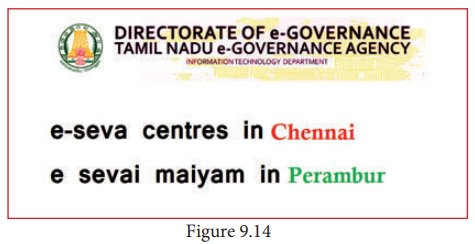Chapter: 11th Computer Applications : Chapter 9 : Introduction to Internet and Email
Types of Interactions in e-Governance
E-governance
Electronic
governance or e-governance is the application of information and communication
technology (ICT) for delivering government services.
Benefits of E-governance
• Reduced corruption
• High transparency
• Increased convenience
• Reduction in overall cost.
• Expanded reach
of government

Types of
Interactions in e-Governance
1. G2G (Government
to Government): When
the exchange of information and services is within the periphery of the government, is termed as G2G
interaction. This can be both horizontal, i.e. among various government
entities and vertical, i.e. between national, state and local government
entities and within different levels of the entity.
2. G2C (Government to Citizen): The interaction amidst the
government and general public is G2C
interaction. Here an interface is set up between government and citizens, which
enables citizens to get access to wide variety of public services. The citizens
has the freedom to share their views and grievances on government policies
anytime, anywhere.
3. G2B (Government to Business): In this case, the e-governance helps
the business class to interact with
the government seamlessly. It aims at eliminating red-tapism, saving time, cost
and establish transparency in the business environment, while interacting with
government.
4. G2E (Government to Employees): The government of any country is the
biggest employer and so it also
deals with employees on a regular basis, as other employers do. ICT helps in
making the interaction between government and employees fast and efficient,
along with raising their level of satisfaction by providing perquisites and
add-on benefits.
E-governance
has a great role to play, that improves and supports all tasks performed by the
government department andagencies, because it simplifies the task on the one
hand and increases the quality of work on the other.
Related Topics